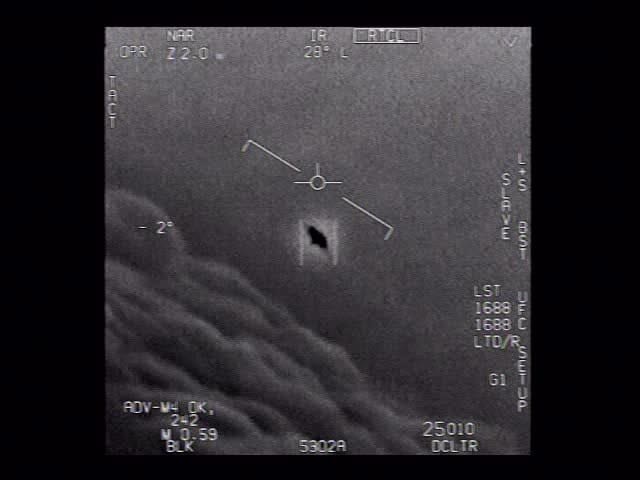unidentified aerial phenomenon / UAP

Unidentified aerial phenomenon, or UAP, is another name for a UFO https://www.wordorigins.org/big-list-entries/flying-saucer, that is an unexplained observation of some object in the sky. Sometimes UAP is interpreted as unidentified anomalous phenomenon. The term is also an illustration of two general principles that can be applied to language. One is the recency illusion; the other is Gresham’s law.
The recency illusion, a term coined by linguist Arnold Zwicky, is “the belief that things you have noticed only recently are in fact recent.” Many think that UAP is a recent coinage, when in fact it is decades old. It first appears in August 1963 in news reports about the U.S. Air Force investigating flying saucers. From Louisiana’s Alexandria Daily Town Talk of 2 August 1963:
Satellites, manned orbital flights and other earthling ventures into outer space seem to have evaporated general interest in the so-called “Unidentified Flying Objects” (UFO’s) or, as the Air Force prefers to label them, “Unidentified Aerial Phenomena” otherwise known as UAP.
According to Google Books Ngram Viewer, unidentified aerial phenomenon spiked in popularity during the 1960s, before falling into obscurity. It then spiked again in the 2000s and has remained popular since, particularly after the August 2020 announcement of a Pentagon task force to investigate UAPs. Such news reports brought the term back into the public consciousness and created the recency illusion.
The term is also an example of Gresham’s law applied to language. The original Gresham’s law applied to money, “bad money drives out good,” or the idea that if two types of coin with the same face value are in circulation and one type contains more precious metal than the other, then the coins with higher commodity value will disappear from circulation as people hoard them or melt them down. Gresham’s law is a nineteenth-century coinage named after Tudor financier Thomas Gresham, who had advocated for monetary reform in Elizabethan England.
As applied to language, the law describes a trend where a term with two senses or uses where one usage is disfavored, the non-disfavored usage will become less common. Once a term has acquired a negative connotation, there is a tendency to try and replace it with a more neutral one.
The U.S. Air Force, primarily concerned with earthly threats to national security, coined UAP because UFO had become irretrievably associated with little green men. (According to the unclassified executive summary of the Pentagon task force investigating UAPs, the group’s final report makes no mention of anything extraterrestrial.) Similarly, many believers in an extraterrestrial origin of UAPs prefer that term because disassociates them and their beliefs from the more lunatic fringe of their movement.
Sources:
Dunleavy, Jerry. “Pentagon Announces UFO Task Force.” Washington Examiner (Washington, DC), 14 August 2020. Proquest Newspapers.
“‘Flying Saucers’ Hard to Ground.” Alexandria Daily Town Talk (Louisiana), 2 August 1963, 7/3. ProQuest Historical Newspapers. The same article appears in multiple papers two days later with a United Press International (UPI) byline.
Google Books Ngram Viewer, “unidentified aerial phenomenon.” Accessed 22 June 2024.
Merriam-Webster.com Dictionary, s.v. UAP, abbr. and n. Accessed 22 June 2024.
Office of the Director of National Intelligence. Preliminary Assessment: Unidentified Aerial Phenomena, 25 June 2021. Archive.org.
Zwicky, Arnold. “Just Between Dr. Language and I.” Language Log, 7 August 2005.
Photo credit: U.S. Navy, 2015. Wikimedia Commons. Public domain image. Analysis of the video demonstrates that the object, while still unidentified, is consistent with what one would expect an ordinary jet aircraft. See Mick West, “The Gimbal Video: Genuine UFO or Camera Artifact?” Skeptic.com, 2 August 2022.